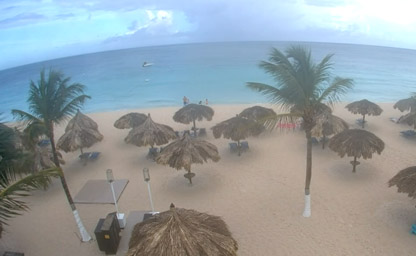
Oranjestad
Beautiful caribbean flair makes the Amsterdam Manor a special place

Beautiful caribbean flair makes the Amsterdam Manor a special place
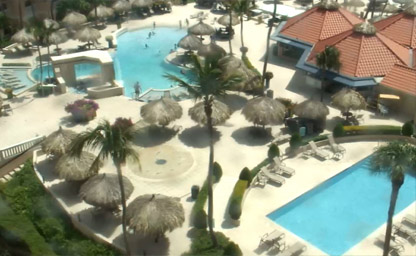
Situated on one of Aruba's finest beaches
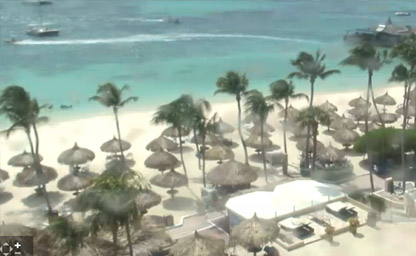
Enjoy sailing, scuba-diving, windsurfing, swimming and deep-sea fishing
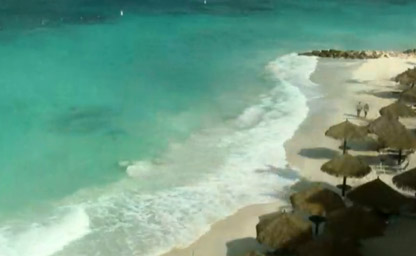
Located on one of the finest beaches in Aruba
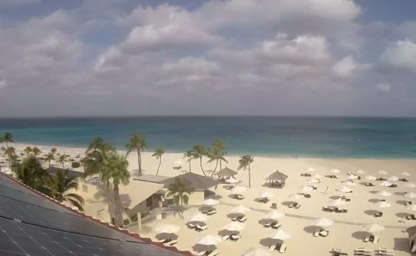
The lighthearted atmosphere perfectly captures both the Aruban spirit and the Caribbean region's unique style and flair
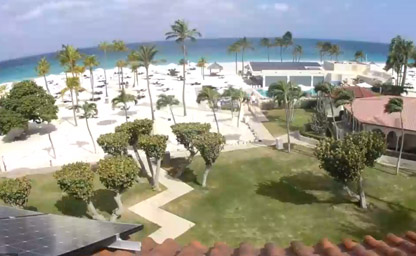
Centered between downtown Oranjestad and Palm Beach on Eagle Beach
Aruba, a captivating Caribbean island known for its pristine beaches, vibrant culture, and year-round sunshine, is now within reach like never before. Join us on a virtual odyssey as we explore the beauty of Aruba through the lens of live webcams, where every moment unfolds in real-time enchantment.
Aruba's live webcams transport you to the iconic white-sand beaches and turquoise waters that define the island's allure. From the famous Eagle Beach to the secluded shores of Baby Beach, immerse yourself in the visual feast of Aruba's coastal paradise as the live feeds capture the essence of Caribbean tranquility.
Beyond the beaches, live webcams unveil the vibrant culture of Aruba. Tune in to the lively streets of Oranjestad, where colorful buildings and bustling markets reflect the island's Dutch and Caribbean influences. Experience the rhythm of local music, the warmth of Aruban hospitality, and the diverse traditions that make this island a cultural mosaic.
Aruba is renowned for its breathtaking sunsets, and live webcams offer a front-row seat to this daily spectacle. Watch as the sun dips below the horizon, painting the sky in hues of orange, pink, and purple. The live feeds capture the magic of Aruba's twilight moments, bringing the beauty of the Caribbean twilight to your screen.
For the adventure seekers, live webcams provide glimpses into the exciting water activities that Aruba offers. From windsurfing in the azure waves to exploring vibrant coral reefs, these cameras let you virtually experience the island's adventurous spirit. Dive into the marine wonders and vibrant underwater life that make Aruba a diver's paradise.
Live webcams are more than just a visual treat; they are your window to planning the perfect Aruban getaway. Stay updated on real-time weather conditions, explore potential activities, and let the virtual experience guide you in creating an unforgettable island escape.
In a world that values sustainable travel, live webcams offer an eco-friendly way to explore Aruba. Indulge in the beauty of this Caribbean jewel without leaving a carbon footprint, promoting responsible tourism and environmental consciousness.
Aruba's live webcams are your portal to an island paradise. Join us on this virtual journey as we unveil the beauty, culture, and adventures that make Aruba a Caribbean jewel. So, sit back, relax, and let the live webcams transport you to the sun-kissed splendor of Aruba, where every moment is a celebration of the island's vibrant spirit.
The vibrant tapestry of Aruba’s past is interwoven with stories of ancient indigenous peoples, colonial ambitions, and the evolution of a modern, cosmopolitan island that has captured the hearts of travelers worldwide. Long before European ships anchored in its pristine bays, Aruba was home to the Caquetío, an Arawak people whose legacy can be traced through ancient petroglyphs and archaeological sites scattered across the island. These early inhabitants thrived on the abundant natural resources, developing unique agricultural practices and building small, community-based settlements that were in harmony with the arid yet captivating landscape. Travelers exploring “Aruba history” and “Caribbean indigenous cultures” will appreciate how these early traditions continue to influence local folklore and artisanal crafts today.
The first European contact with Aruba is believed to have occurred in the early 16th century when Spanish explorers, driven by the quest for new territories and riches, charted the waters of the Caribbean. Despite initial interest, the Spanish did not settle extensively on the island due to its perceived lack of precious metals and the arid terrain, leaving Aruba relatively untouched during the early colonial period. Instead, it became a strategic waypoint for Spanish shipping routes, a fact that resonates in popular search queries like “Aruba colonial routes” and “Spanish exploration Caribbean.”
In the 17th century, Aruba’s destiny took a dramatic turn when it was claimed by the Dutch. The island became part of the Dutch West Indies and was later incorporated into the group known as the ABC Islands—Aruba, Bonaire, and Curaçao. Under Dutch rule, Aruba gradually evolved from a neglected outpost into a thriving hub of commerce and trade. The island’s strategic location in the southern Caribbean made it a critical point for naval operations and merchant fleets, which is often highlighted in travel guides under the keyword “Dutch Caribbean history.”
The 18th and 19th centuries witnessed significant cultural exchanges as Aruba's population grew through the integration of diverse ethnic groups. The island’s economy was initially fueled by aloe production—a natural resource for which Aruba became famous. Aloe plantations dotted the landscape, and the product soon became one of Aruba’s foremost exports, earning the island a reputation as a “hidden gem” in the world of natural skincare. Enthusiasts searching for “Aruba aloe history” and “Caribbean natural remedies” will find a deep-rooted connection between this industry and the island’s economic development.
The influence of multiple cultures—native Arawak, Spanish, and Dutch—contributed to a melting pot of traditions that shaped modern Aruban identity. Over time, the island became a crossroads of cultures, with African, Latin American, and European influences all contributing to its unique social fabric. This fusion is reflected in local festivals, music, and cuisine, making “Aruba cultural heritage” a popular search term among those seeking an authentic Caribbean travel experience.
In the 20th century, Aruba’s transformation accelerated with the growth of the tourism industry. The island’s pristine white-sand beaches, crystal-clear waters, and vibrant cultural life attracted international visitors, prompting significant investments in infrastructure and hospitality. The discovery of oil nearby further spurred economic development, allowing Aruba to modernize while still preserving its rich historical traditions. Today, historical sites like Fort Zoutman—an 18th-century fortification—and the colorful streets of Oranjestad stand as testaments to the island’s multifaceted past. Keywords like “Aruba historical landmarks” and “Fort Zoutman Aruba” frequently appear in travel itineraries for visitors eager to explore the legacy of this Caribbean paradise.
Aruba’s modern history is also marked by its political evolution. The island has enjoyed a special status as a constituent country within the Kingdom of the Netherlands since 1986, giving it a unique blend of autonomy and connection to European administrative traditions. This status has not only influenced local governance but has also enriched Aruba’s cultural and economic landscape. The resilience and adaptability of its people, reflected in both historical events and contemporary life, continue to be celebrated in local museums, guided tours, and community festivals that attract curious travelers from around the world.
For those intrigued by the transformative journey from indigenous traditions to modern tourism, Aruba offers an immersive historical experience. Artifacts, well-preserved colonial architecture, and oral histories shared by local elders provide a window into the island’s storied past. Popular search terms like “Aruba travel history” and “Aruba cultural tours” guide visitors through historical narratives that are as enchanting as the island’s natural beauty.
The legacy of Aruba is also expressed through its enduring relationship with the sea. The island’s maritime history is rich with tales of explorers, pirates, and traders who navigated the treacherous waters of the Caribbean. This storied past is celebrated in local museums and maritime festivals, where visitors can learn about traditional boat-building techniques and the art of navigation—a heritage that continues to influence modern water sports and diving excursions. Terms like “Aruba sailing history” and “Caribbean maritime traditions” are frequently used by travel enthusiasts planning their next adventure.
Aruba is celebrated for its enviable climate, which is one of the island’s greatest assets in the world of “Aruba travel guide” and “Caribbean vacations.” Nestled just outside the hurricane belt, Aruba enjoys a consistently warm and sunny climate year-round, a fact that makes it a perennial favorite among tourists seeking to escape colder climes. The island experiences a tropical desert climate, characterized by minimal rainfall and steady trade winds that offer natural cooling, even on the hottest days. These climatic conditions are often highlighted in search queries like “best weather Aruba” and “Aruba vacation climate.”
The temperature in Aruba typically ranges from 27°C (81°F) to 32°C (90°F) throughout the year, with the warmest periods occurring in the summer months. Despite the heat, the refreshing breeze provided by the constant trade winds ensures that the island remains comfortable and inviting for all kinds of outdoor activities. Whether lounging on the beach, exploring the rugged interior, or participating in water sports, visitors will find that Aruba’s climate enhances every aspect of their experience. Travelers often look for terms such as “Aruba beach weather” and “Caribbean sun” to help plan their perfect getaway.
One of the unique features of Aruba’s climate is its low humidity and scarce rainfall. The island receives an average of only about 500 mm (20 inches) of rain per year, and most of this precipitation occurs in short, sporadic bursts during the island’s brief rainy season. This dryness has given rise to Aruba’s striking desert-like landscapes, where cacti and other drought-resistant plants flourish amidst a backdrop of rugged terrain and expansive beaches. Keywords like “dry climate Aruba” and “Aruba desert landscapes” are common in online searches by travelers interested in exploring these unique natural settings.
Despite being located in the tropics, Aruba’s climate remains remarkably stable, with little variation from season to season. This stability is a major draw for tourists who value predictability and comfort in their travel plans. Even during the so-called “off-season,” visitors can expect plenty of sunshine and pleasant temperatures, making Aruba an attractive destination throughout the year. Travel enthusiasts searching for “year-round vacations Aruba” and “Aruba sunny days” find that the island’s climate provides the perfect setting for relaxation and adventure alike.
The constant trade winds, which are a hallmark of Aruba’s climate, also play a crucial role in shaping the island’s outdoor experiences. These winds are ideal for a range of water sports, including windsurfing, kitesurfing, and sailing, and they contribute to the vibrant marine life found in the island’s surrounding waters. Keywords such as “Aruba windsurfing,” “kitesurfing in Aruba,” and “Aruba sailing adventures” often top search results for those planning an active holiday in the Caribbean. The interplay of sun, wind, and sea creates an environment that is both invigorating and soothing, perfectly complementing the island’s reputation as a premier destination for relaxation and recreation.
For eco-conscious travelers and nature enthusiasts, Aruba’s climate also supports a surprising diversity of flora and fauna. The arid environment has given rise to a distinctive ecosystem where resilient species thrive, from the iconic divi-divi trees shaped by constant winds to the vibrant wildflowers that bloom in isolated patches. The island’s commitment to environmental preservation, often highlighted in searches for “eco-tourism Aruba” and “Aruba nature reserves,” ensures that visitors can experience the pristine beauty of its natural habitats while contributing to sustainable tourism practices.
Aruba’s geography is a stunning blend of natural beauty and unique landforms that captivate travelers searching for “Aruba beaches,” “Caribbean islands,” and “Aruba diving spots.” The island, which spans approximately 180 square kilometers (70 square miles), is relatively small but packed with a diverse range of landscapes that offer endless exploration opportunities. From its world-renowned white-sand beaches and turquoise waters to its rugged, rocky interiors, Aruba is a microcosm of Caribbean charm and adventure.
The coastline of Aruba is one of its most celebrated features, with pristine beaches that stretch along the entire island. Eagle Beach and Palm Beach are among the most famous, regularly topping lists in “best beaches Aruba” searches due to their soft sands, crystal-clear waters, and vibrant atmosphere. These beaches are not only perfect for sunbathing and swimming but also serve as ideal launchpads for snorkeling, jet-skiing, and other water-based activities. With keywords such as “Aruba beach resorts” and “Caribbean snorkeling,” visitors can easily find a range of accommodations and activities that highlight the island’s coastal allure.
Moving inland, the geography of Aruba reveals a contrasting landscape of rugged, rocky terrain that is shaped by ancient volcanic activity and constant winds. The interior of the island is dotted with unique geological formations, including limestone plateaus, volcanic hills, and natural bridges. Arikok National Park, which covers nearly 20% of Aruba’s land area, is a testament to the island’s diverse geography. This protected area offers visitors a glimpse into Aruba’s wild side, with winding trails that traverse cacti-studded deserts, hidden caves adorned with ancient rock paintings, and breathtaking panoramic views of the surrounding countryside. Searches for “Arikok National Park” and “Aruba hiking trails” are frequent among adventurers eager to explore the rugged heart of the island.
The topography of Aruba is relatively flat compared to many other Caribbean islands, yet it possesses a rugged charm that is both inviting and mysterious. The island’s highest points, though modest in elevation, provide strategic vantage points from which visitors can survey the dramatic interplay between land and sea. The natural formations in the interior, including striking rock arches and wind-carved stone formations, offer unique photo opportunities that are widely shared on social media under hashtags like #ArubaAdventure and #HiddenAruba. This blend of natural artistry and geological history is a major draw for photographers, nature enthusiasts, and casual tourists alike.
Water, a central element in Aruba’s geography, shapes much of the island’s identity. Beyond the inviting beaches, Aruba’s surrounding coral reefs are home to an abundance of marine life, making the island a world-class destination for diving and snorkeling. The clear, warm waters provide excellent visibility, revealing underwater landscapes teeming with colorful fish, sea turtles, and intricate coral formations. Popular search terms such as “Aruba diving spots” and “snorkeling in Aruba” often guide enthusiasts to explore these vibrant marine ecosystems, ensuring that every dive is an adventure into an underwater paradise.
Another geographical feature that sets Aruba apart is its distinct desert-like landscape, which is a rarity in the Caribbean. The island’s arid climate has sculpted a unique ecosystem where cacti, divi-divi trees, and resilient wildflowers coexist with rugged rock formations and sandy expanses. This unusual blend of desert and coastal environments is a frequent subject of interest in travel blogs and search queries like “Aruba desert tours” and “unique landscapes Aruba,” offering a stark contrast to the lush tropical imagery typically associated with the region.
The island’s geographical diversity is further accentuated by its small size, which allows visitors to experience a wide range of environments in a single day. A short drive from the bustling beach resorts, travelers can find themselves exploring secluded coves, hiking through arid trails in Arikok National Park, or diving into the rich marine biodiversity that surrounds the island. This accessibility makes Aruba an ideal destination for those who wish to combine relaxation with adventure, often highlighted in phrases such as “day trips Aruba” and “Aruba excursion tours.”
Urban landscapes also play a role in Aruba’s geographical charm. The capital city, Oranjestad, is a vibrant mix of colorful colonial architecture, modern infrastructure, and lively marketplaces. The city’s picturesque streets, painted in bright hues of yellow, blue, and red, create an inviting atmosphere that is often featured in travel searches like “Oranjestad Aruba” and “best places to visit in Aruba.” The blend of historical architecture with contemporary urban amenities encapsulates the island’s ability to balance its rich past with a dynamic present, making it a popular destination for cultural tourism and shopping excursions alike.
Beyond the immediate tourist hubs, Aruba’s lesser-known geographical features offer a glimpse into the island’s wild side. Remote beaches, hidden coves, and secluded hiking trails provide opportunities for solitude and introspection away from the more crowded areas. These off-the-beaten-path destinations are frequently sought after by travelers interested in “secret spots in Aruba” and “Aruba nature escapes,” providing a more intimate encounter with the island’s natural beauty. This aspect of Aruba’s geography appeals especially to eco-tourists and adventure seekers who wish to experience the authentic, untouched side of the Caribbean.
Aruba’s geography is not merely a backdrop for leisure and exploration—it also plays a crucial role in shaping the island’s cultural and economic identity. The interplay between the arid interior and the abundant coastal resources has historically influenced local livelihoods, from traditional fishing practices to modern tourism and water sports industries. The island’s natural harbor, pristine beaches, and extensive coral reefs continue to attract visitors from around the globe, reinforcing Aruba’s status as a top destination for “Caribbean getaways” and “luxury beach vacations.”
New Tip: For an unforgettable experience in Aruba, consider taking a guided off-road tour that ventures into the rugged interior of the island, allowing you to discover hidden beaches, ancient cave paintings, and breathtaking viewpoints that most tourists miss.
Interesting Fact: Despite its small size, Aruba is one of the few Caribbean islands that lies completely outside the hurricane belt, ensuring consistently clear skies and stable weather conditions year-round—a true rarity in the region that continues to attract visitors seeking a safe and sunny escape.